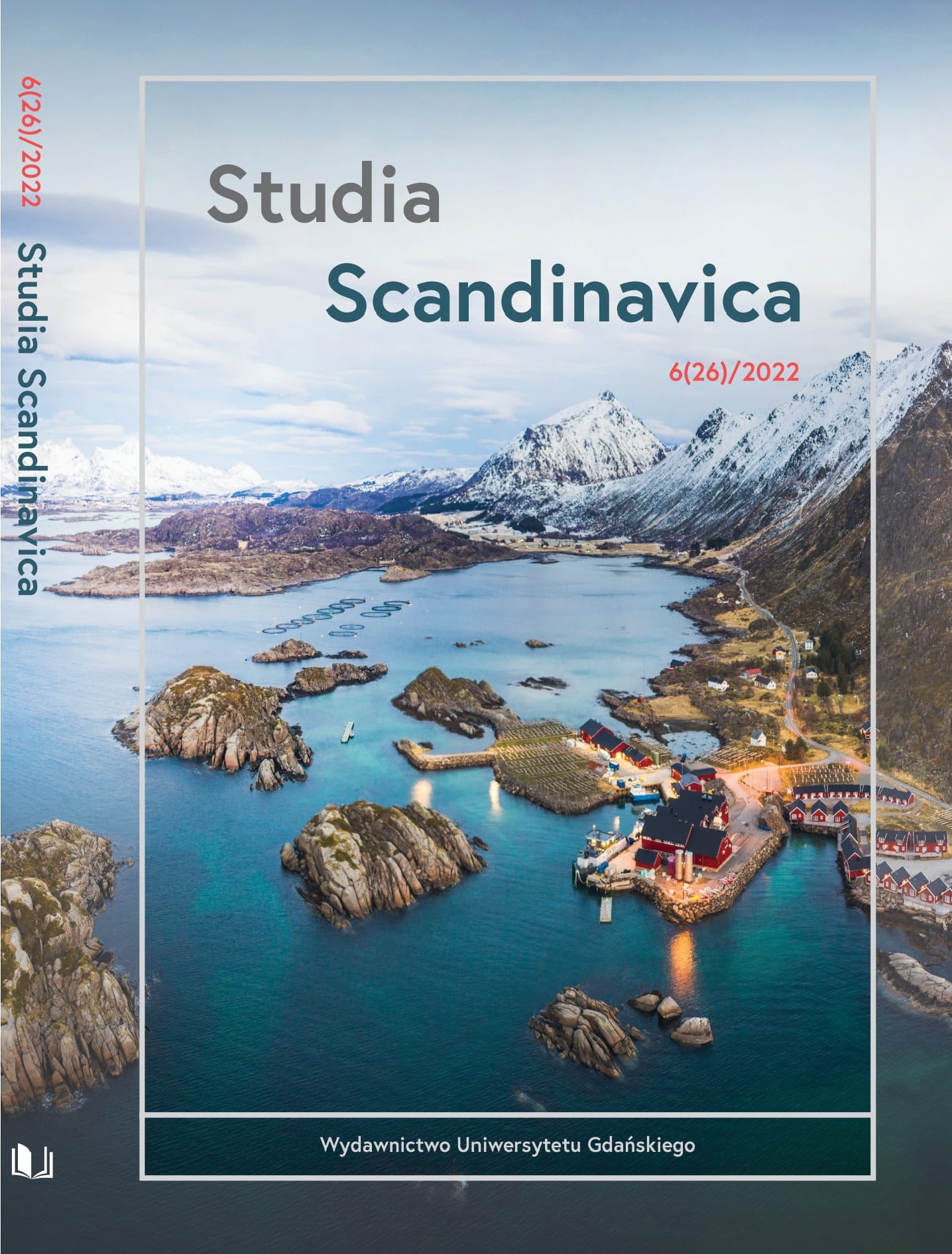Sailing from Illness to Health: Spaces in Gaute Heivoll’s "Kongens hjerte"
DOI:
https://doi.org/10.26881/ss.2022.26.01Słowa kluczowe:
Gaute Heivoll, Kongens hjerte, radesyke, spatiality, illness as metaphorAbstrakt
This article reflects on the issue of spatiality in Gaute Heivoll’s novel Kongens hjerte [The King’s Heart] from 2011, and analyzes how different descriptions of space interplay with illness metaphors in the text, contributing to a literary imaging of illness as “a road to health.” Kongens hjerte is a historical novel set in the second half of the eighteenth century, telling the story of a father and his ill daughter traveling from Norway to Copenhagen in order to seek treatment. The girl suffers from radesyke, a mysterious and lethal disease whose etiology remains unclear up to this day. After a theoretical introduction and outlining the context, the paper suggests possible lines of analysis of the spatiality aspects in the novel and moves on to a detailed reflection upon two categories: the presence/absence of the father and daughter in the same space, and the horizontal/ vertical orientation of the protagonists’ bodies. The conclusion of the study is that constructions of space and spatiality are a coherent and immanent component of the illness images in Heivoll’s novel, enabling a wide range of reading alternatives and supplying additional contexts for possible interpretations of the text.
Downloads
Bibliografia
Bjorvatn, B., Danielsen, A. (2003). Radesyken – en norsk tragedie. Tidsskrift for den norske legeforening 123(24): 3557–3558.
Certeau, M., de (1988). The Practice of Everyday Life. Trans. S. Rendall. Berkeley, Los Angeles and London: University of California Press.
Hansen, P.K. (2018). Illness and Heroics: On Counter-Narrative and Counter-Metaphor in the Discourse on Cancer. Frontiers of Narrative Studies 4(1): 213–228.
Heivoll, G. (2011). Kongens hjerte. Oslo: Tiden Norsk Forlag.
Jakowska, K. (2014). Uwięzienie w zamkniętej przestrzeni. O metaforze przestrzennej w prozie Gombrowicza. In: E. Konończuk, E. Nofikow, E. Sidoruk (eds.). Geografia i metafora. Białystok: Wydawnictwo Uniwersytetu w Białymstoku, pp. 197–208.
Lie, A.K. (2003). Tanker om radesyken i Norge – “Den hentærer sine Offere langsomt.” Tidsskrift for den norske legeforening 123(24): 3562–3564.
Lie, A.K. (2007). Origin Stories and the Norwegian Radesyge. Social History of Medicine 20(3): 563–579.
Lie, A.K. (2008). Radesykens tilblivelse. Historien om en sykdom. PhD thesis. Oslo: Universitetet i Oslo.
Malmio, K., Kurikka, K. (2019). Introduction: Storied Spaces of Contemporary Nordic Literature. In: K. Malmio, K. Kurikka (eds.). Contemporary Nordic Literature and Spatiality. London: Palgrave Macmillan, pp. 1–21.
Nesby, L. (2017). Radesyken som litterær og medisinsk praksis. In: R. Sørly, B.H. Bilx (eds.). Fortelling og forskning: narrativ teori og metode i tverrfaglig perspektiv. Oslo: Orkana forlag, pp. 201–219.
Reisfield, G.M., Wilson, G.R. (2004). Use of Metaphor in the Discourse on Cancer. Journal of Clinical Oncology 22(19): 4024–4027.
Semino, E. et al. (2017). The Online Use of Violence and Journey Metaphors by Patients with Cancer, as Compared with Health Professionals: A Mixed Methods Study. BMJ supportive & palliative care 7: 60–66.
Sidoruk, E. (2014). Być „w samym środku świata”. Metaforyka przestrzenna w Monizie Clavier Sławomira Mrożka. In: E. Konończuk, E. Nofikow, E. Sidoruk (eds.). Geografia i metafora. Białystok: Wydawnictwo Uniwersytetu w Białymstoku, pp. 31–44.
Sontag, S. (1978). Illness as Metaphor. New York: Farrar, Straus and Giroux.
Voisine-Jechova, H. (2014). Przestrzeń i wizja neoromantyczna. Hiszpania w Popiołach Żeromskiego. In: E. Konończuk, E. Nofikow, E. Sidoruk (eds.). Geografia i metafor. Białystok: Wydawnictwo Uniwersytetu w Białymstoku, pp. 209–229.

 Uniwersyteckie Czasopisma Naukowe
Uniwersyteckie Czasopisma Naukowe





